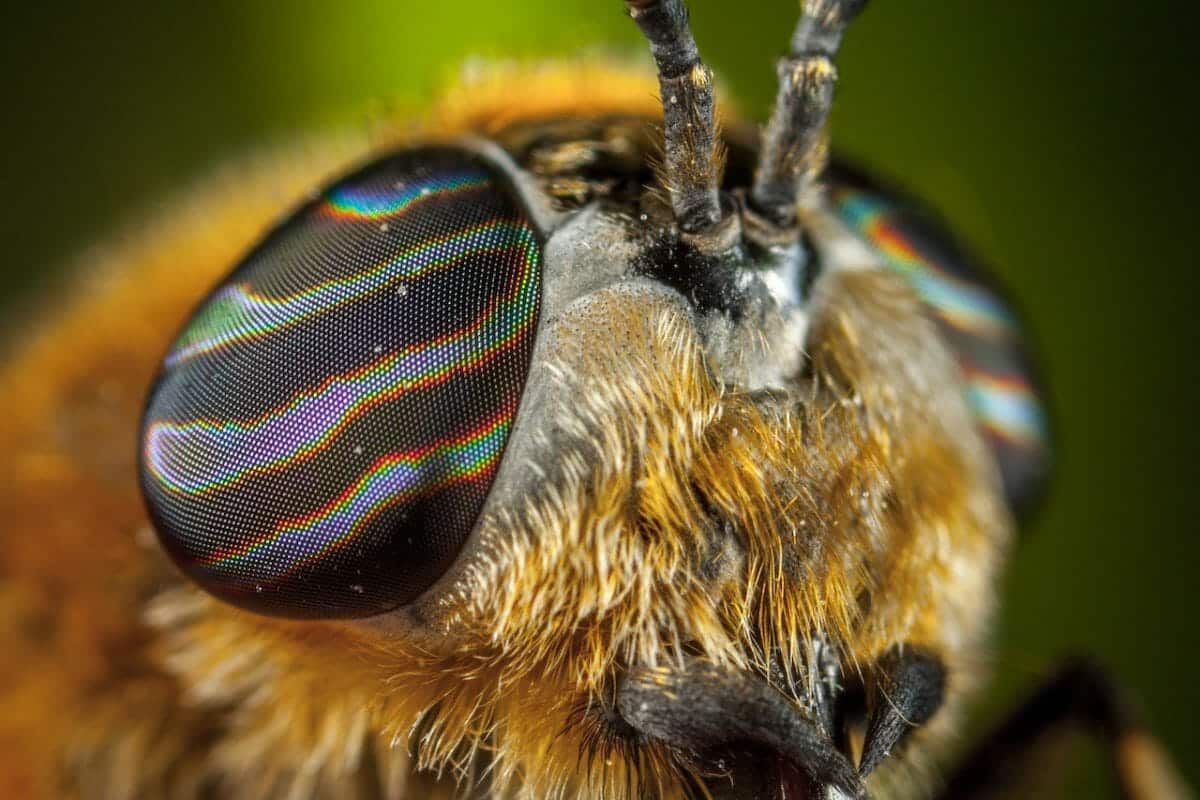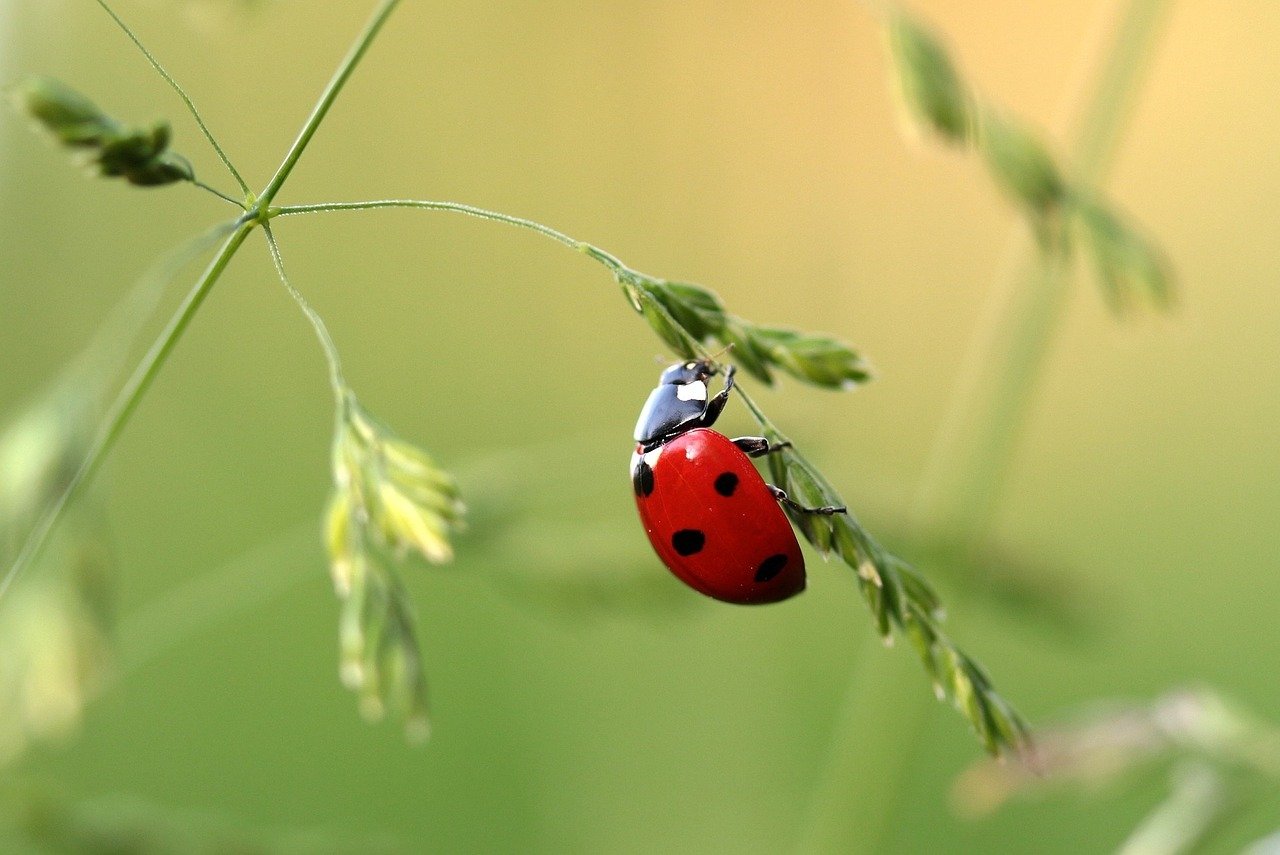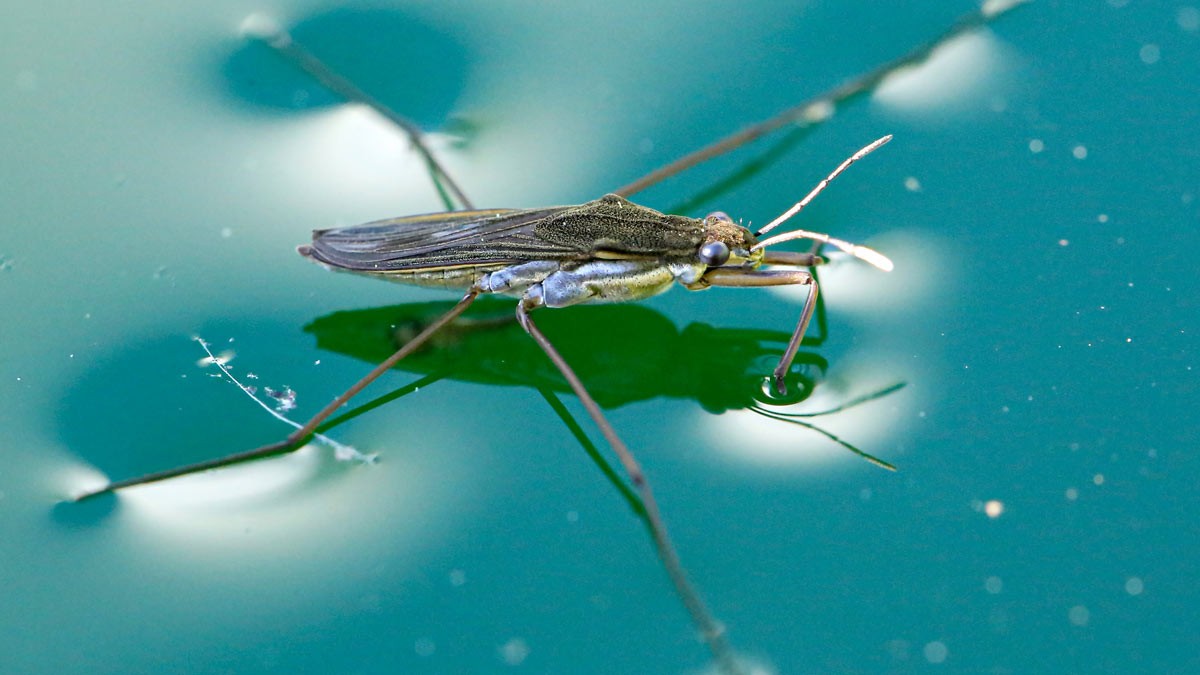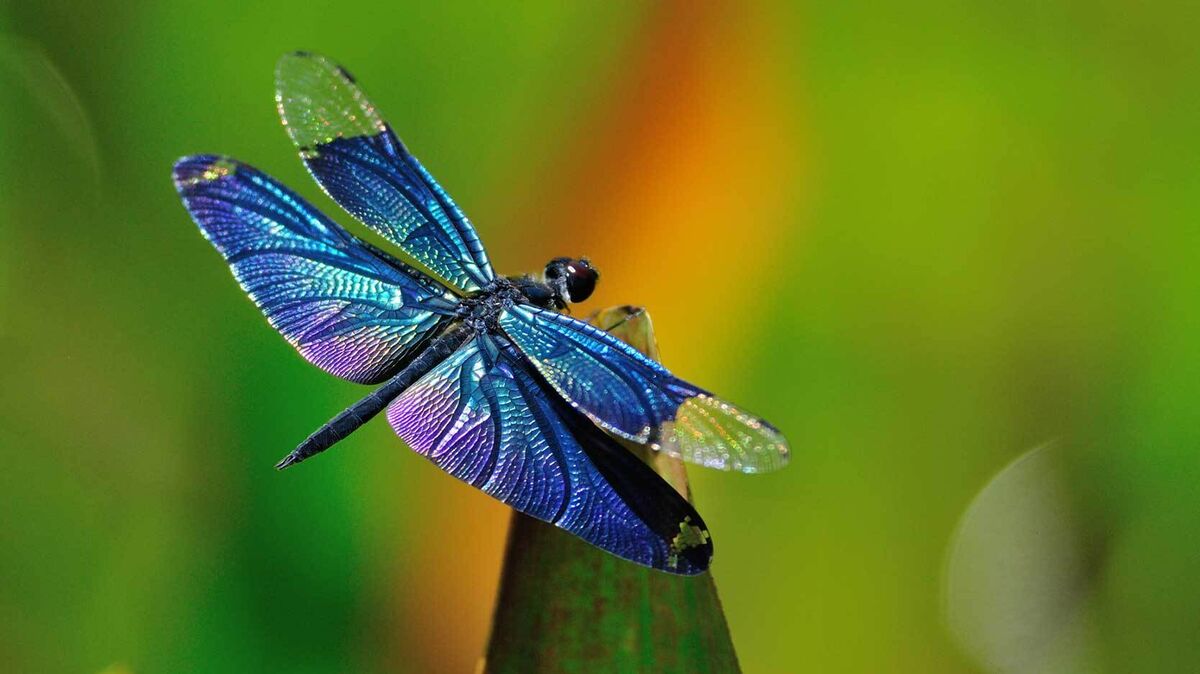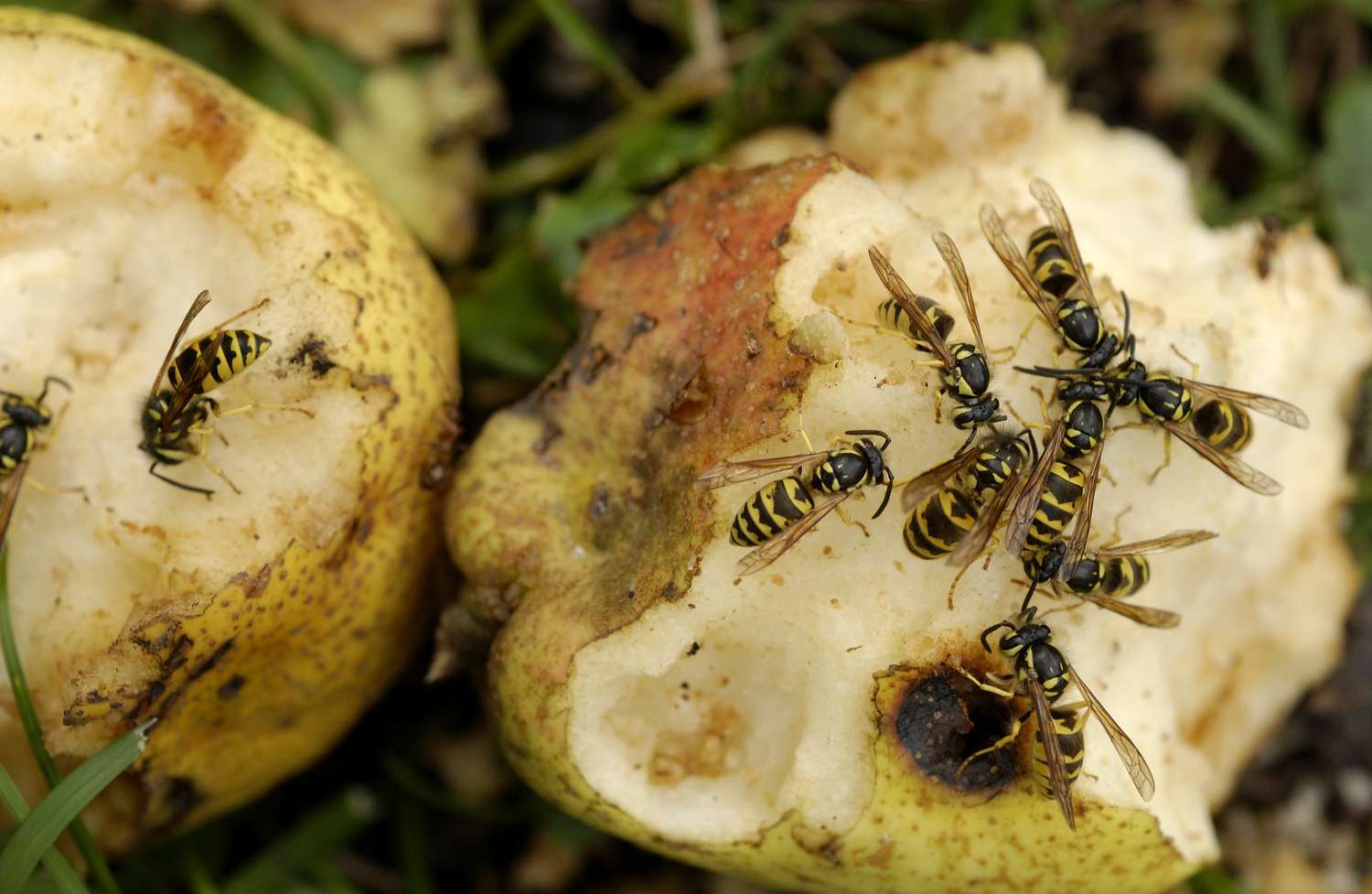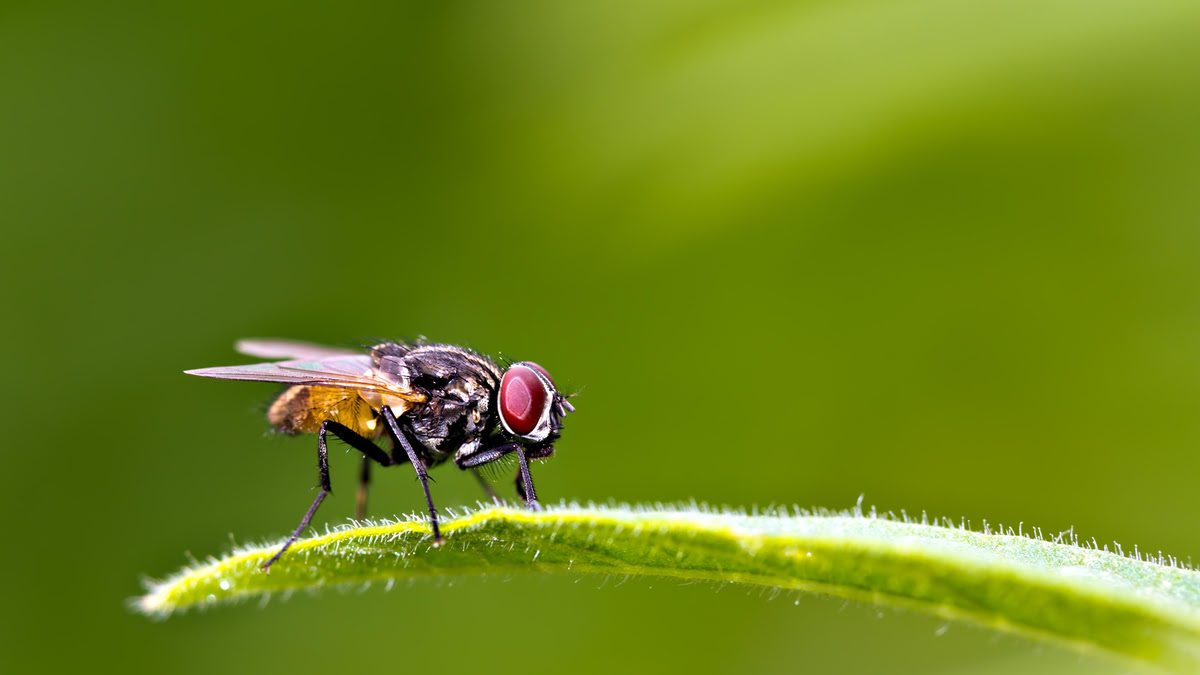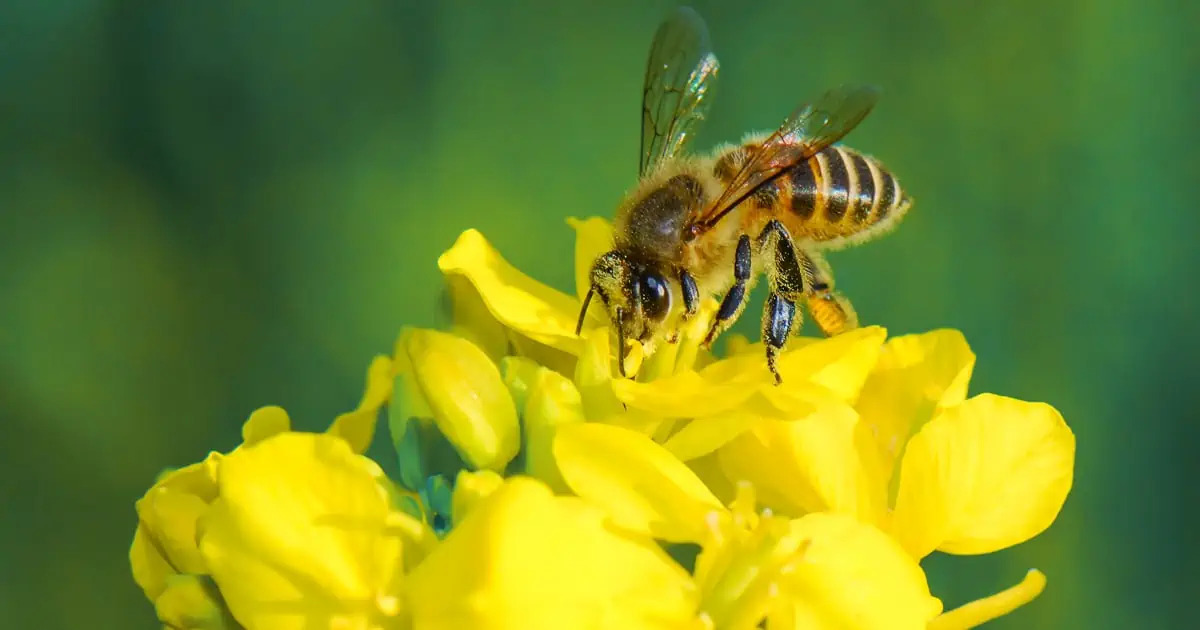Home>Gardening News and Trends>Latest News>How Do Insects Taste


Latest News
How Do Insects Taste
Modified: January 22, 2024
Discover the latest news on how insects taste and explore the intriguing world of entomophagy. Learn about the fascinating flavors and nutritional benefits of consuming insects.
(Many of the links in this article redirect to a specific reviewed product. Your purchase of these products through affiliate links helps to generate commission for Chicagolandgardening.com, at no extra cost. Learn more)
Table of Contents
Introduction
Insects are fascinating creatures that play essential roles in our ecosystems. From pollinating plants to serving as a food source for other animals, insects are an integral part of our natural world. One of the most intriguing aspects of insects is how they perceive the world around them, including the way they taste their food.
Taste is a vital sensory function that helps insects determine if a substance is palatable or harmful. While our taste buds are located on our tongues, insects have taste receptors scattered throughout their bodies. This unique sensory system allows them to explore their environment and make informed decisions about what to eat.
In this article, we will delve into the intricate world of insect taste, exploring the mechanisms behind their taste sensation and the different tastes that insects can detect. We will also discuss how insects’ ability to taste influences their food preferences and examine the potential applications and implications of studying insect taste.
By gaining a deeper understanding of how insects taste and interact with their surroundings, we can unlock valuable insights that may have implications in various fields, ranging from agriculture and pest control to the development of new flavors and sensory experiences for humans.
So, join us on this enlightening journey as we dive into the remarkable world of insect taste and uncover the hidden intricacies of their sensory perception.
The Sensory System of Insects
Insects possess a highly developed sensory system that allows them to perceive and interact with their environment. Through their specialized sensory organs, they can detect various stimuli, including taste. The sensory system of insects comprises different sensory modalities, such as touch, smell, and taste, all working in harmony to provide a comprehensive understanding of their surroundings.
The primary organs responsible for taste in insects are taste sensilla, which are tiny structures found on their mouthparts, antennae, feet, and even other body parts. These sensilla contain taste receptors that allow insects to detect and differentiate between different chemicals present in their environment.
Interestingly, the number and distribution of taste sensilla on an insect’s body vary depending on their species and ecological niche. For example, in bees, the mouthparts and antennae have a higher density of taste sensilla compared to other body parts. This specialization in taste receptors reflects the importance of taste in guiding the foraging behavior of bees.
It’s important to note that insects’ taste receptors are not limited to detecting sweet, sour, bitter, and salty tastes like humans. In fact, they have specialized taste receptors that allow them to detect a wide range of compounds, including sugars, proteins, fatty acids, and even pheromones.
In addition to the taste sensilla, insects also have other sensory structures that influence their perception of taste. For example, the sensilla on their mouthparts not only detect taste, but they also serve as touch receptors, providing crucial information about the texture and consistency of their food.
Overall, the sensory system of insects is a remarkable feat of evolution, allowing them to navigate and interact with their environment through various modalities. By understanding the intricacies of this system, researchers can gain insights into how insects perceive taste and how it influences their behavior and survival.
Taste Receptors in Insects
Taste receptors are crucial components of the insect sensory system, enabling them to detect and respond to different chemical compounds in their environment. These receptors are located within specialized structures known as taste sensilla. Each taste sensillum contains multiple taste receptor cells that are highly sensitive to specific chemicals.
Insects have a diverse array of taste receptors that allow them to detect and differentiate between various tastes. One such group of receptors is the gustatory receptors (GRs). GRs are responsible for the detection of bitter, sweet, and umami tastes. These receptors play an important role in determining if a substance is safe to consume or potentially harmful.
Another group of taste receptors found in insects is the ionotropic receptors (IRs). IRs are responsible for detecting a range of chemical compounds, including acids and other volatile compounds. These receptors not only contribute to the perception of taste but also play a role in the detection of pheromones, which are vital for communication and mating behaviors in many insect species.
Furthermore, taste receptors in insects are not limited to the mouthparts. Insects also have taste receptors on their antennae, legs, and even reproductive organs. This distribution of taste receptors throughout their bodies allows insects to obtain taste information from different sources and make informed decisions about their environment and potential food sources.
It is worth noting that the number of taste receptors in insects can vary greatly between species. For example, ants have been found to possess around 400 different taste receptors, while fruit flies have approximately 68. This variation in taste receptor numbers reflects the different ecological niches and dietary preferences of different insect species.
The study of taste receptors in insects has provided valuable insights into how these small creatures perceive and interact with their environment. By understanding the specific taste receptors present in different insect species, researchers can gain a deeper understanding of their feeding behaviors, food preferences, and ecological roles.
Different Tastes Detected by Insects
Insects have the remarkable ability to detect and differentiate between a wide range of tastes. While humans typically recognize sweet, sour, bitter, and salty tastes, insects can detect a much broader spectrum of flavors, including tastes that are unique to them.
One of the most important flavors for insects is sweetness. Many insects are attracted to sweet substances such as nectar, which provides them with a valuable source of energy. The taste receptors in insects can detect various sugars, including glucose and fructose, allowing them to identify and seek out food sources rich in these compounds.
In addition to sweetness, insects are also sensitive to bitter tastes. Bitter compounds are often associated with toxins and serve as warning signals for insects to avoid potentially harmful substances. These bitter-tasting compounds can deter insects from consuming certain plants or prey items that may be toxic.
Interestingly, some insects have taste receptors that are highly sensitive to specific amino acids, which are the building blocks of proteins. These receptors allow insects to detect sources of essential nutrients, such as plant or animal tissues that contain protein. By being able to taste amino acids, insects can make informed decisions about their diet and ensure they obtain the necessary nutrients for survival and reproduction.
Insects are also sensitive to the taste of fatty acids, which are important sources of energy. These compounds play a role in guiding insects towards food sources that are rich in fats, such as ripe fruits or seeds. By being able to detect and taste fatty acids, insects can identify high-energy food sources and optimize their foraging efforts.
Furthermore, some insects have taste receptors specifically designed to detect pheromones, which are chemical signals used for communication and mating. These receptors enable insects to pick up on subtle scent cues released by conspecifics, helping them locate potential mates or avoid aggressive competitors.
The ability of insects to detect and distinguish between different tastes is essential for their survival and reproductive success. By having specialized taste receptors, they can make informed decisions about what to eat, avoid potentially harmful substances, and ensure they obtain the necessary nutrients for their specific dietary needs.
Mechanisms of Taste Sensation in Insects
The mechanisms of taste sensation in insects involve a complex interplay between taste sensilla, taste receptors, and neural signaling. When an insect encounters a potential food source, taste sensilla on its mouthparts or other body parts come into contact with the chemicals present in the substance.
The taste receptors within the sensilla detect specific chemical compounds and initiate a series of biochemical reactions. These reactions result in the activation of sensory neurons, which transmit signals to the insect’s brain for processing and interpretation.
The taste receptors in insects operate through two primary mechanisms: cell surface receptors and ion channels. Cell surface receptors, such as gustatory receptors (GRs), are located on the external surface of the taste receptor cells. When they bind to specific molecules, they trigger a cascade of events that ultimately lead to the generation of electrical signals.
Ion channels, on the other hand, play a role in the detection of certain tastes, such as acids and other volatile compounds. These ion channels are sensitive to changes in ion concentrations and can open or close in response to the presence of specific molecules. When an ion channel opens, it allows the flow of ions into or out of the taste receptor cell, generating an electrical signal.
Once the taste receptors have generated an electrical signal, sensory neurons in the taste sensilla transmit these signals to the insect’s brain. The brain then processes and integrates this information with other sensory inputs, such as visual cues or odorants, to generate appropriate behavioral responses.
It is worth mentioning that the sensitivity and responsiveness of taste receptors in insects may vary depending on factors such as the insect’s physiological state and the concentration of the chemical compounds being detected. In some cases, certain taste receptors may become more or less sensitive based on the insect’s nutritional needs or reproductive status.
Understanding the mechanisms of taste sensation in insects is not only fascinating from a scientific perspective but also has practical implications. This knowledge can be applied to develop more effective insect control methods, such as using specific chemicals that disrupt or override the insect’s taste receptors to deter feeding or attract them to baited traps.
In summary, the mechanisms of taste sensation in insects involve the detection of specific chemical compounds by taste receptors within specialized taste sensilla. These receptors trigger a series of biochemical reactions and generate electrical signals that are transmitted to the insect’s brain. By studying these mechanisms, researchers can gain valuable insights into the sensory perception of insects and develop innovative approaches for insect control and management.
Chemicals That Attract or Repel Insects
Insects rely heavily on their sense of taste to identify substances that are either attractive or repulsive to them. Through their taste receptors, insects can detect specific chemicals that influence their behavior and feeding preferences. Understanding these chemicals can help us develop effective strategies to either attract or repel insects for various purposes, such as pest control or pollination enhancement.
One group of chemicals that attract insects are pheromones. Pheromones are chemical substances released by insects to communicate with others of the same species. They can act as attractants, signaling the presence of a suitable mate, or as aggregators, drawing insects together in a specific location.
Another class of chemicals that attract insects are volatile organic compounds (VOCs) emitted by plants. These VOCs can act as signals to attract pollinators, such as bees and butterflies, to help in the process of plant reproduction. Different flowers produce specific VOCs to attract their preferred pollinators, ensuring successful pollination and seed production.
In contrast, there are chemicals that repel insects and act as natural deterrents. One well-known example is the pungent odor of citronella, which is commonly used to repel mosquitoes. Citronella masks the attractive scents that mosquitoes are drawn to, reducing their ability to locate and bite humans.
Some plants produce chemicals called allelochemicals, which are toxic or repellent to insects. These allelochemicals can act as natural insecticides, protecting the plants from herbivorous insects. Neem oil, derived from the neem tree, is one example of a plant-based insect repellent that is used in organic gardening and pest management.
In addition to specific chemicals, insects can also be influenced by the overall flavor profile of plants. For example, the balance of sugars, acids, and other compounds in fruits can determine their attractiveness to fruit flies. This is why farmers and researchers strive to develop fruit varieties that are more appealing to consumers while minimizing attractiveness to pests.
Furthermore, synthetic chemicals called semiochemicals can be utilized to manipulate insect behavior. For instance, sex pheromones can be synthesized and used to trap or lure insects away from crops, disrupting their mating patterns and reducing pest populations.
By understanding the chemicals that attract or repel insects, we can develop more targeted and sustainable methods of pest management. Whether it is using pheromone traps to monitor and control insect populations or developing plant-based repellents, this knowledge allows us to find effective and eco-friendly solutions to coexist with insects in our environments.
Insect Taste and Food Preferences
Insects’ sense of taste plays a crucial role in determining their food preferences. The combination of taste receptors and sensory organs allows insects to assess the taste and nutritional value of different food sources, guiding their foraging behavior and dietary choices.
One important factor that influences insect food preferences is the presence of sugars. Many insects, such as bees, butterflies, and fruit flies, are attracted to flowers or fruits that contain high amounts of sugar. The taste receptors in these insects can detect and respond to sugars, signaling the presence of a valuable energy source.
In addition to sugars, insects also have specific taste receptors for amino acids, which are essential building blocks of proteins. These taste receptors allow insects to detect and choose food sources that provide them with the necessary proteins for growth, development, and reproduction. The presence of amino acids can make certain plants or animal tissues more appealing to insects as potential food sources.
Furthermore, the balance of other taste components, such as bitter compounds and acids, can also affect insects’ food preferences. Bitter compounds often serve as a warning sign for potential toxicity, causing insects to avoid certain plants or substances. On the other hand, some insects may be attracted to specific acids, as they can indicate ripe fruits or acidic food sources that are rich in nutrients.
Interestingly, insects’ food preferences can also be influenced by their previous experiences and memories. For example, if an insect has had a negative experience, such as ingesting a poisonous substance, it may develop aversions to similar-tasting compounds in the future. This aversion can help protect them from consuming potentially harmful substances.
The understanding of insects’ taste and food preferences has practical implications in various fields. In agriculture, it can help in developing strategies to control crop pests by manipulating the taste or smell of plants to make them less attractive. It can also aid in the development of insect-friendly habitats and plants to promote beneficial insects for pollination and natural pest control.
By studying insect taste and food preferences, scientists can gain insights into the ecological interactions between insects and their food sources. This knowledge can inform the development of sustainable practices in agriculture, pest management, and conservation, ultimately contributing to the coexistence of insects and humans in our ecosystems.
Applications and Implications of Insect Taste Research
The research conducted on insect taste has far-reaching applications and implications in various fields. By delving deeper into the intricacies of how insects perceive taste and interact with their environment, we can unlock valuable insights that can be applied in agriculture, pest control, and even the development of new flavors and sensory experiences for humans.
One of the practical applications of insect taste research is in the field of agriculture. By understanding the specific tastes that insects find attractive or repulsive, scientists can develop strategies to protect crops from pests. This knowledge can inform the development of novel insecticides or repellents that target the taste receptors of insects, effectively deterring them from damaging crops while minimizing environmental impact.
Insect taste research also plays a crucial role in the development of sustainable pest management strategies. By understanding the taste preferences of beneficial insects, such as predators or parasitoids, researchers can design attractants that lure these insects to agricultural fields. This can help promote biological control of pests and reduce reliance on chemical pesticides.
Furthermore, insights from insect taste research have the potential to revolutionize the food and beverage industry. By understanding the flavors that insects find appealing, scientists can develop new taste compounds and flavors that can enhance the sensory experience for humans. This can lead to the creation of unique and novel food products, as well as the discovery of natural alternatives to artificial flavorings.
Insect taste research can also have implications for human health. For example, studying the taste receptors of disease-carrying insects, like mosquitoes, can help in the development of better repellents and deterrents to prevent the transmission of diseases such as dengue fever and malaria.
Furthermore, understanding the taste preferences of insects can provide insights into their ecological roles and interactions with the environment. This knowledge can guide conservation efforts by identifying key plants or habitats that are essential for the survival of specific insect species, aiding in the preservation of biodiversity.
In summary, insect taste research has broad applications and implications in agriculture, pest control, food innovation, and public health. By unraveling the complexities of insect taste perception, we can develop innovative strategies for sustainable pest management, enhance the culinary experience for humans, and pave the way for a greater understanding of insect ecology and conservation.
Conclusion
Insect taste is a fascinating and complex field of study that provides valuable insights into the sensory perception and behavior of these remarkable creatures. Through their taste sensilla and specialized taste receptors, insects are able to detect and differentiate between a wide range of tastes, including sugars, bitter compounds, amino acids, and volatile chemicals.
Understanding how insects taste their environment has numerous applications and implications. From developing sustainable pest management strategies in agriculture to creating new flavors and sensory experiences for humans, the knowledge gained from insect taste research has the potential to impact various industries and fields.
By studying the mechanisms of taste sensation in insects, scientists can gain a deeper understanding of their feeding behaviors, food preferences, and ecological roles. This knowledge can inform the development of innovative pest control methods that target the taste receptors of insects, minimizing the use of harmful pesticides and promoting biological control.
Furthermore, the study of insect taste can lead to the development of new food products and flavors. By understanding the tastes that insects find attractive, scientists can create novel taste compounds that enhance the sensory experience for humans. This has the potential to revolutionize the food and beverage industry, providing unique and exciting options for consumers.
Insect taste research also has implications for human health, specifically in the development of better repellents and deterrents for disease-carrying insects. By understanding the taste receptors of mosquitoes and other disease vectors, scientists can develop more effective methods to prevent the transmission of diseases and protect public health.
Overall, studying insect taste provides us with a deeper understanding of these fascinating creatures and their intricate sensory systems. It opens up possibilities for sustainable pest management, innovative food production, and advancements in public health. By continuing to explore and unravel the mysteries of insect taste, we can gain valuable insights that contribute to the coexistence of insects and humans in our ecosystem.
